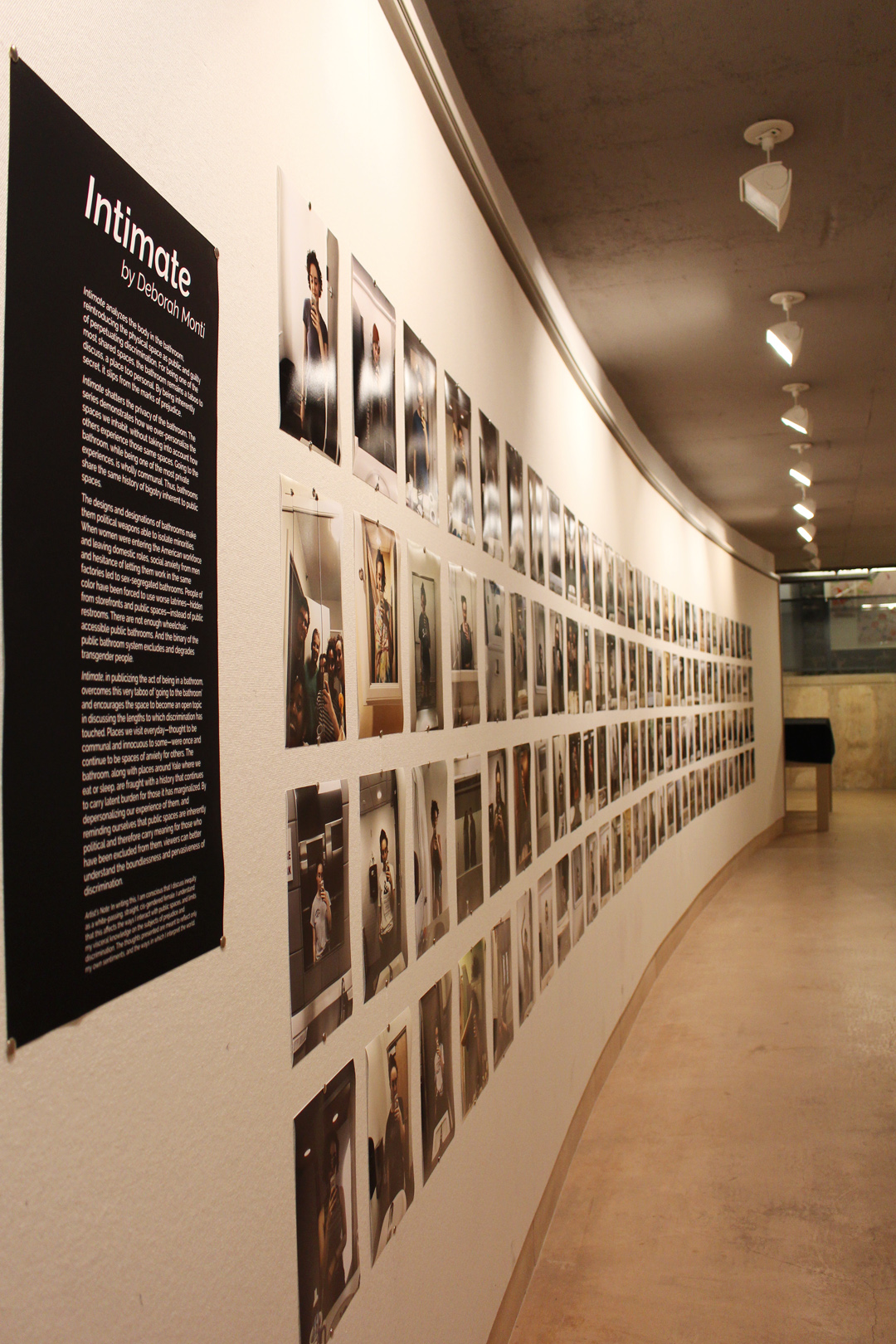
The basement of Jonathan Edwards is the perfect home for Monti’s visual art exhibition, “Intimate.” The art gallery — which consists of fabric panels over the walls of a short hallway — exposes Monti’s artwork for the perfect amount of time: 10 seconds. Any more lingering would depreciate the worth of the art.
Monti’s exhibit, “Intimate,” reels in its viewers in with its sheer absurdity — the exhibit consists of 126 bathroom selfies of the artist — but leaves little else to chew on. Once viewers get over the initial wow factor, and forego art buzzwords like “modern” and “experimental,” the exhibit is devoid of meaning. It’s Monti, times 126. It’s not radical. It’s been done before.
While Monti’s replication could claim novelty if it had some deeper meaning, its description shows us that it doesn’t. The explanation vaguely mentions public spaces and discrimination, but its obscurity leaves us thinking that Monti didn’t know what she herself wanted the art to promote. Perhaps, we ask, the art did not have original intention? Perhaps it was done out of sheer vanity (Monti, we’ve heard, is nothing short of conceited), and then slapped together with a “deeper meaning” haphazardly? There is a disparity between the art and the message that disturbs us. The art doesn’t move us in the way that the descriptions suggests it should. Sure it looks cool, but it doesn’t make us think any differently about the discrimination that supposedly exists within a bathroom.
To that note, we could even argue that bathrooms are the public place most untouched by discrimination. Bathrooms are safe havens, since we go to them alone, and often as a break from the other, more discriminatory spaces we inhabit. We ask Monti: isn’t the idea of discrimination being pervasive well-known? Haven’t we Yalies dealt with this issue all of last year? Doesn’t she trust that we understand?
“Intimate” is also a prime example of the low-grade art that Yale students like Monti — who have no formal art education — are getting away with. It looks cohesive because of its symmetric layout, but each individual photo does not compliment those around it. We want there to be a greater picture, yet there is none. There is no chronology behind the images. There is just Monti, looking down into her iPhone in a variety of different bathrooms. But if we’re being frank, there isn’t even too much diversity amongst bathroom locations.
A few good things: Monti did dedicate nine months to the project, and the arrangement of the photos is pleasantly overwhelming. To put a mass amount of selfies for public view is also a bold move — not to mention the fact that in some of the photos she exposes her shoulders, and in one, she is lifting up her own shirt.
Yet we wish Monti would have given us more. The selfie has become a prime icon for artists to critique, and has the potential to be the subject of an eye-opening and transformative exhibit, but Monti didn’t seem to take full advantage of that. She could’ve satirized the glorification of the selfie even more, and better reflected the mockery in her photos. Or she could have explained how her art truly helps reveal the discrimination haunting public places. Besides, what would Monti know of discrimination? Is she really the right person to be making this type of art?
Intimate would have fared better as a satire about university funding, as a look-what-Yale-will-pay-for piece. Or maybe as ridiculing modern art, to show how little effort is needed to be named a contemporary artist. If she had chosen these ideas as the exhibit’s message, she would be both sticking it to the university and to the viewers. We would, in theory, have been punk’d by not-art that has almost successfully fooled us into thinking it is art-art. It would have been the safer option, since if she narrated the art this way the narcissism of the exhibit would be obscured by the idea that it functions as mockery. As much as we wish it would be, this is not what the art is.
So when you head down to see the installation, make sure to just briskly walk by. Don’t think too much about it, or you’ll see right through it.
The exhibit runs through Oct. 11.







